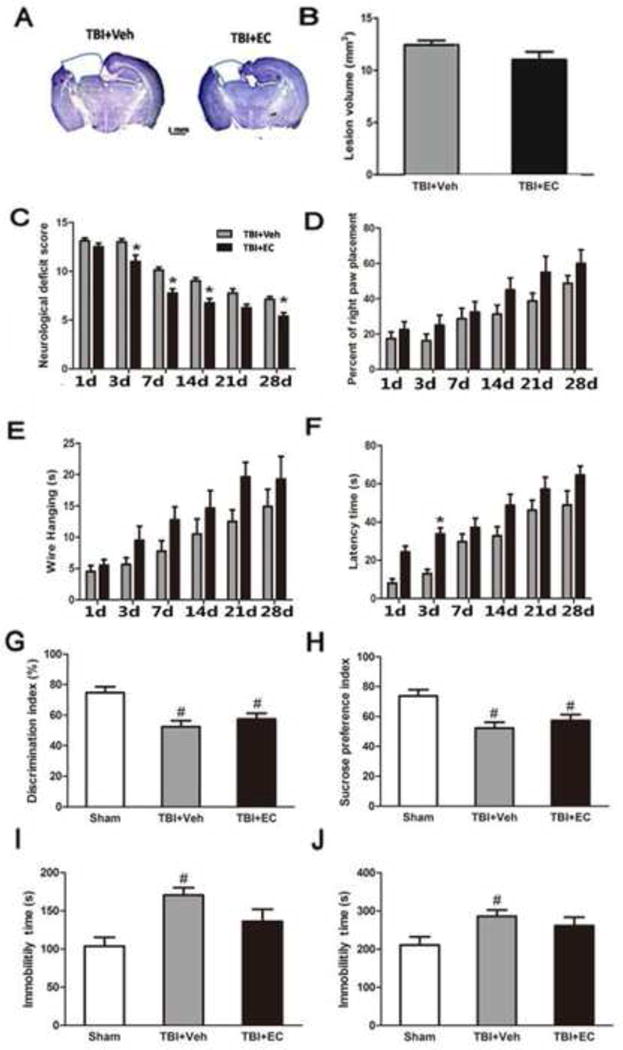Fig. 8.

EC does not decrease lesion volume or promote neurologic function in Nrf2 knockout (KO) mice after TBI. (A) Cresyl violet-stained brain sections at 28 days post-TBI. Injured areas lack staining and are circled in blue (Scale bar: 1 mm). (B) Lesion volume did not differ significantly between the vehicle- and EC-treated groups. n=8/group, p>0.05 (t-test). (C) Neurologic deficit score was significantly lower in the EC-treated group than in the vehicle-treated group on days 3, 7, 14, and 28 after TBI. n=8/group, *p<0.05 (two-way ANOVA followed by Bonferroni test). Performance in the forelimb-placing test (D), wire-hanging test (E), and rotroard test (F) did not differ between the EC-treated Nrf2 KO mice and the vehicle-treated Nrf2 KO mice after TBI. n=8/group, all p>0.05. The discrimination index in the novel object recognition test (G) and the sucrose preference index (H) were both significantly decreased in Nrf2 KO mice after TBI but did not differ between vehicle-treated and EC-treated TBI groups. n=6/group, both p>0.05. Immobility time in the tail suspension test (I) and forced swim test (J) was significantly increased in Nrf2 KO mice after TBI but did not differ between vehicle-treated and EC-treated TBI groups. n=6/group, both p>0.05. *p<0.05 versus vehicle group; #p<0.05 versus sham group (one-way ANOVA followed by Newman-Keuls test).
